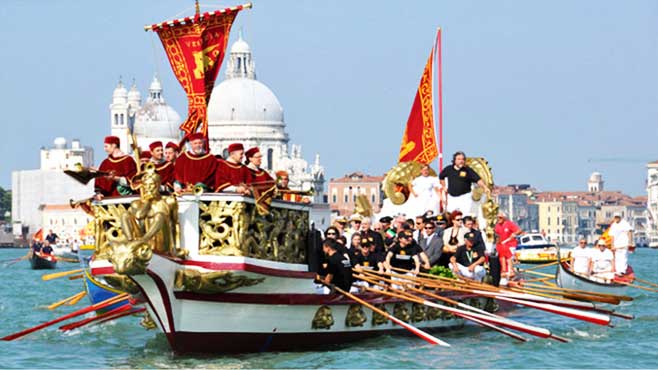Every year at Ascension Day (Ascensione di Cristo, or “Festa della Sensa” as the Venetians say, it is celebrated in May) the Republic of Venice celebrates itself but also it’s intimate relationship to the sea.
In the age of Renaissance the head of state, called the Doge, would be rowed out to the island Sant Elena in a boat. Upon entering the open sea, he would throw a golden ring in to the water as a sign of matrimony to the Mediterranean Sea.
This tradition stopped when the independent republic dissolved in the so called Fall of the Republic in 1797. Since the 1960’s Venice has picked up the tradition and the ritual is enacted anualy by the mayor of Venice.

The tradition is believed to be more then 1.000 years old and probably has origins in even older pagan rituals. There are various related stories and rituals of sacrificial offerings to the sea, often with the intent of making it more lenient for sea travels.

See the respective Wikipedia article here.